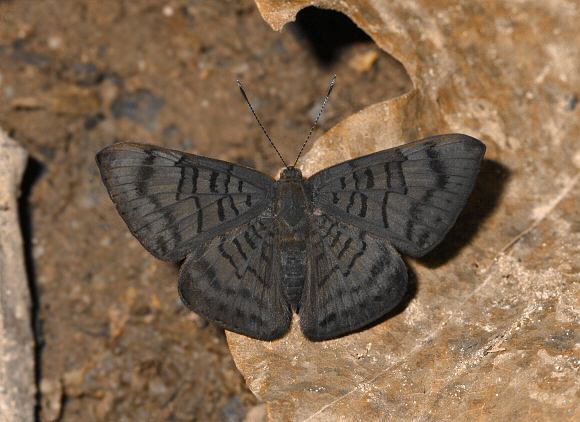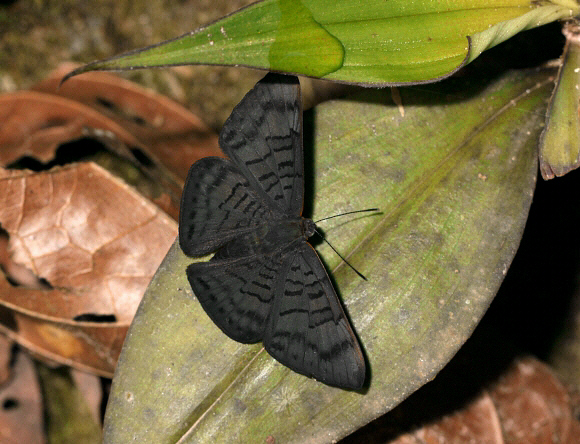 Emesis eurydice, male, Catarata Bayoz, Le Merced, Peru – Adrian Hoskins
Emesis eurydice, male, Catarata Bayoz, Le Merced, Peru – Adrian Hoskins
Introduction
The distinctive wing pattern and shape of Emesis make them instantly recognisable as a genus, but some of the 41 known species can be very difficult to tell apart.This species for example was, along with fastidiosa, castigata, liodes, aurimna, glaucescens and spreta, formerly considered to be a “form” or subspecies of Emesis lucinda, but all of these taxa have since been elevated to the status of full species.
The male of Emesis eurydice can be distinguished from lucinda by the more clearly defined, and more linear black markings of the former. On the underside of the wings lucinda is a unicolorous orange, with black markings; eurydice differs in having a two-tone underside – reddish orange on the basal two-thirds, and dark brown on the outer third. The females of both species have a pale earthy brown ground colour on the upperside, with a prominent white patch at the falcate apex. On the underside they are a dirty brownish-white colour, marked with dark brown.
The butterfly is found in the eastern Andes of Ecuador and Peru and in Mato Grosso state, Brazil.
Habitats
This species occurs in primary and secondary forest habitats at altitudes between about 200-900m.
Lifecycle
I have no information specific to eurydice. The eggs of Emesis species are typically white and highly sculptured. They are laid singly or in clusters of up to 30, according to species. The known larval foodplants encompass the families Ranunculaceae, Euphorbiaceae, Rhizophoraceae, Sterculiaceae, Anacardiaceae and Nyctaginaceae.
 Emesis eurydice, male, Catarata Bayoz, Le Merced, Peru – Adrian Hoskins
Emesis eurydice, male, Catarata Bayoz, Le Merced, Peru – Adrian Hoskins
Adult behaviour
On sunny days males are often seen imbibing moisture from shady forest tracks or dry river beds, but in overcast conditions they commonly appear in more open situations, and sometimes settle on foliage in forest edge habitats. When feeding they usually hold the wings outspread, and often dip their antennae, presumably to “taste” the substrate.
Females are seen much less frequently as they spend most of their time within the forest.
